
9 minute read
Spring is coming - join us as a community scientist
After the cold and wet winter we’ve been experiencing in Denver, I know everyone is looking forward to spring. As the days grow longer and warmer, we all start looking for the telltale signs that spring is arriving — birds chirping, trees lea ng out, lilac buds, bulbs emerging out of the damp soil. As you observe nature around you, why not start taking pictures, recording your observations and contributing to large projects as a community scientist? April is the perfect month to join community science e orts across the globe.
At the Denver Botanic Gardens, we seek to connect people with plants. Our scientists are particularly interested in studying patterns and processes of biodiversity. One way we do this is through community science (also known as citizen science) initiatives such as the Denver EcoFlora project. ese initiatives
Contact Us: 1630 Miner St., Idaho Springs, CO 80452 - 303-566-4100
Mailing Address: 750 W. Hampden Ave., Suite 225 Englewood, CO 80110
Phone: 303-566-4100
Web: ClearCreekCourant.com
To subscribe call 303-566-4100
GUEST COLUMN
Jennifer Neale allow participants to connect with plants by making observations of biodiversity patterns in their environment. EcoFlora is based on the traditional ora concept, a list or inventory of plants in a given area or period of time. e eco in EcoFlora represents going beyond a traditional ora and encompassing the study of urban ecosystems. We run the Denver EcoFlora project on the iNaturalist platform where we engage the community in documenting plants living in the Denver metro area. Our goal is to document all plants living in the seven county metro area (Adams, Arapahoe, Boulder, Broom eld, Denver, Douglas and Je erson counties) using the iNaturalist app. Why? You may ask. Well, understanding the ora of an area is the best way to protect it.
As part of the EcoFlora project, we send out monthly challenges called
LINDA SHAPLEY Publisher lshapley@coloradocommunitymedia.com
MICHAEL DE YOANNA Editor-in-Chief michael@coloradocommunitymedia.com
LINDSAY NICOLETTI Operations/ Circulation Manager lnicoletti@coloradocommunitymedia.com
EcoQuests to engage participants in documenting a speci c species, group of plants or theme.
April’s EcoQuest has two parts: the rst is focused on some of the rst owers to emerge in spring, the pasque owers (Pulsatilla nutalliana). en, starting April 28, a global competition begins with the start of the City Nature Challenge - a challenge to document the most biodiversity within cities. Using the iNaturalist app, you can make observations of any wild organism: plant, bird, insect, fungi. Observations made between April 28 and May 1 count towards the competition. Last year, we had nearly 400 participants observe more than 600 species. Our goal is to surpass those numbers this year. And, if the wet winter unfolds into a sunny spring, we just might be able to do it. Many local partners are organizing hikes or bioblitzes during the City Nature Challenge. Check our website (botanicgardens.org/ science-research/citizen-scienceprograms/city-nature-challenge) for details on events and how to register.
You can contribute to scienti c studies by downloading the iNaturalist app and using it to take photos of the nature around you. We encourage you to get outside, feel the sun on your face and contribute to science while you’re out there.
Denver Botanic Gardens Citizen Science projects: botanicgardens. org/science-research/citizen-science-programs
Denver EcoFlora project: inaturalist.org/projects/denver-eco oraproject
Denver Botanic Gardens City Nature Challenge information: Denver-Boulder Metro City Nature Challenge: https://www.inaturalist. org/projects/city-nature-challenge2023-denver-boulder-metro
Jennifer Neale is the director of research and conservation for the Denver Botanic Gardens
Columnists & Guest Commentaries
Columnist opinions are not necessarily those of the Courant.
We welcome letters to the editor. Please Include your full name, address and the best number to reach you by telephone.
Email letters to kfiore@coloradocommunitymedia.com
Deadline Wed. for the following week’s paper.
BY SHANNON MULLANE THE COLORADO SUN











Colorado’s snow season is nearing its typical peak with above-average snowpack, and water o cials are beginning to worry about ooding and gauging potential reservoir releases. But in some places, the snow just keeps coming.
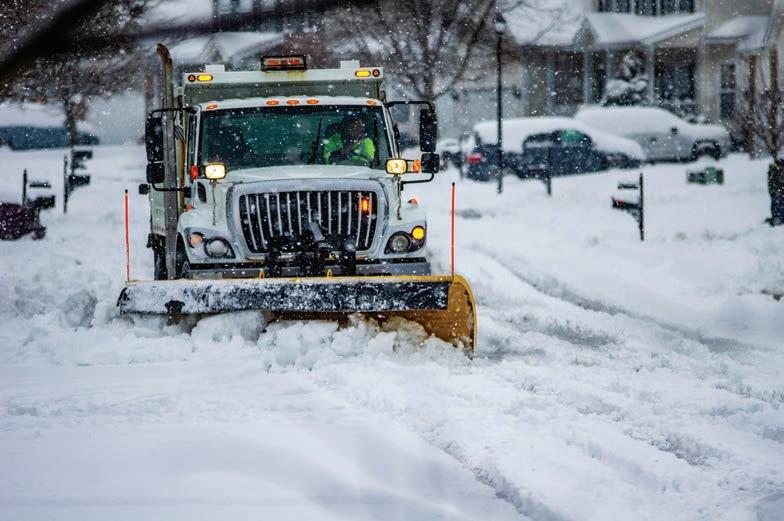
Each year, April marks the point in the season when the snowpack starts to reach its peak as temperatures warm and spring runo begins. It’s also an important point for water o cials, water users and even emergency managers: How high the snow piles up is a key indicator of water supply for the next year, but how fast it melts can have big impacts on ooding and seasonal irrigation.


“We do anticipate high water,” said Sgt. Todd Wheeler, emergency management coordinator for Mo at County in northwestern Colorado. “Will it be higher than normal? at remains to be seen.” e Lower Colorado Region, which includes Arizona, California and Nevada, was at 446% of the historical median as of ursday. e above-average snow is welcome news for the parched basin, which is facing its worst drought in 1,200 years. However the basin’s two largest reservoirs, Lake Mead and Lake Powell, will need to see this kind of snowfall for multiple years to recover from the impacts of pro- longed drought and overuse, experts say. e water levels at Lake Mead are even projected to fall further this year, according to the Bureau of Reclamation. e seasonal peak refers to the snow-water equivalent — the amount of liquid water in snow — in the snowpack. e peaks vary regionally and year to year, and the data can be sparse for elevations higher than 11,000 feet and lower than 9,000 because of the distribution of data collection stations, called SNOTEL sites, Goble said.
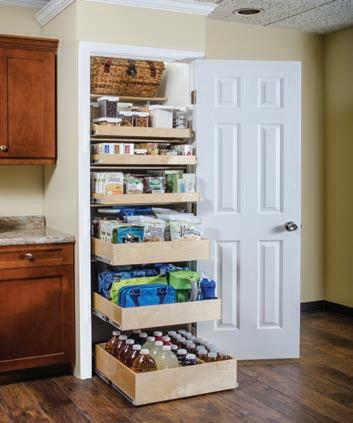


In the Colorado River Basin, which supplies water to 40 million people spread across seven Western states and 30 Native American tribes, the snowpack was above average as it reached its seasonal peak.
In the Upper Colorado Region, which includes Colorado, New Mexico, Wyoming and Utah, the snowpack usually peaks around April 8, and on ursday, it was about 160% of the median from 1991 to 2020, according to Natural Resources Conservation Service data. It was even nearing the highest snowpack recorded since 1986.

“While this year has been really good news in terms of above-average snowpack and above-average stream ows into Lake Powell over the summer, it’s not enough to totally re ll those reservoirs or even get them back to normal,” said Peter Goble, a climatologist with the Colorado Climate Center at Colorado State University.
In Colorado, the snowpack has already passed its historical peak in southern basins, including the Upper Rio Grande, Arkansas and the combined San Miguel-DoloresAnimas-San Juan basin. Northern basins, like the Yampa-White, Gunnison, Colorado main stem, North Platte and South Platte, will peak this weekend or later this month. at means more winter storms might roll through — and help add to the water supply — but they will balance out with spring runo as temperatures warm.
“ at’s not to say that the moisture that falls after peak snowpack isn’t important,” Goble said. “In fact, it is really important, what happens in late April and May, in terms of the overall runo that we get. But I think you’ll probably see our numbers peak quite soon here.”

Western Slope river basins, which feed the Colorado River, were all reporting above-average snowpack Wednesday. e snowpack in the Upper Rio Grande basin, which usually peaks April 2, was at 135% of the historical median, according to SNOTEL data April 5.

“ is is a great opportunity to enjoy the beautiful weather and celebrate Christ’s resurrection,” Banks said.
Morgan added that the turnout was impressive.
Regis Jesuit High School stu- dents Rosary Tambunan and Katie Nelson brought exchange student Ruby Hascka of Switzerland to see the sun rise at Red Rocks, not realizing that thousands would be joining them to witness the sight at the service.






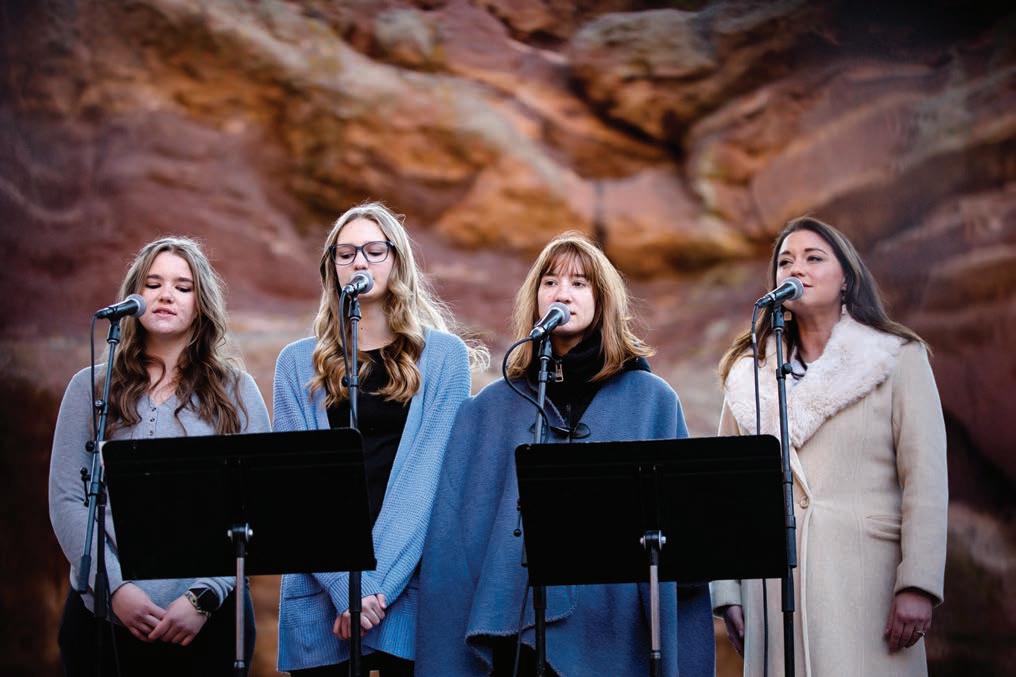
“ is is a gift from God,” Tambunan said. “It’s a blessing in disguise.”
Jessica Gray of Littleton stopped on a stairway to admire the view, noting that the last time she went to Sunrise Service was about 25 years ago.
“It’s great to be here with the community and take in the beauty of God’s creation,” Gray said.
Easter is one of Gray’s favorite holidays because it’s about love and forgiveness, noting that the high attendance at the service showed people’s belief in God and the meaning of Easter.
The service
Adrian Miller, who welcomed attendees to the service, told the crowd that it was easy to see that they loved the Lord because they came out even with a chill in the air. He was impressed that by applause, many said this was their rst time at Sunrise Service. e Colorado Council of Church-
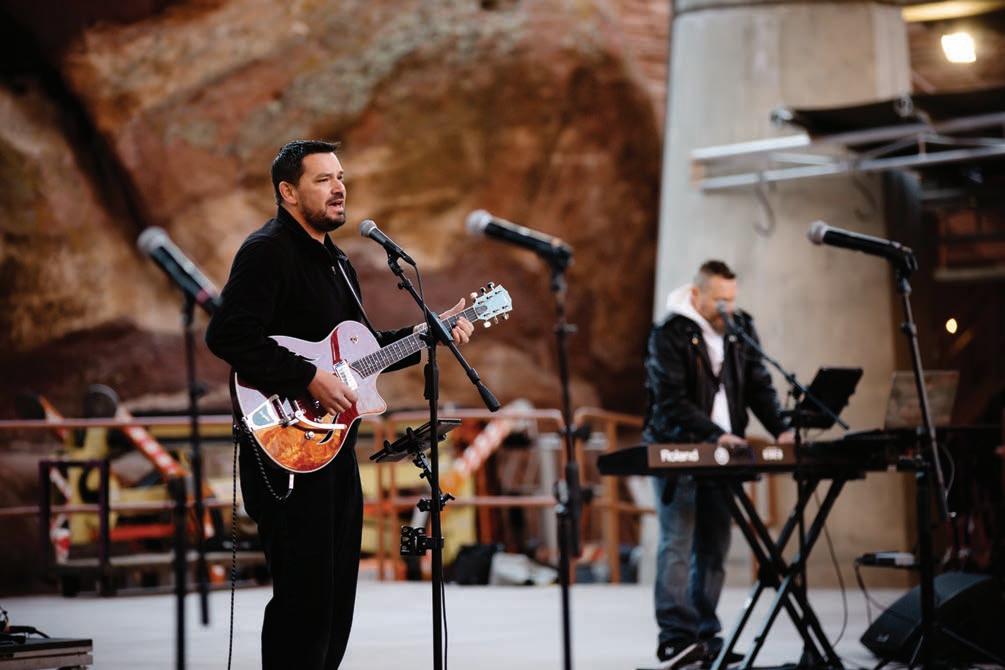
SEE EASTER, P11 es, which sponsors the service, is comprised of 13 Christian denominations representing 800 churches. e Rev. Tamara Boynton said she had a beautiful view from the stage as she looked at all the faces in the crowd.




“No matter who you are or where you are on life’s journey, you are welcome here,” she told them, calling Red Rocks Amphitheatre an apt location for the service. She told them to breathe in the area’s beauty and breathe out the distractions in their hearts; to breathe in unconditional love and breathe out others who sway them from that love; to breathe in the wonders of the risen Christ and breathe out the darkness of the tomb.
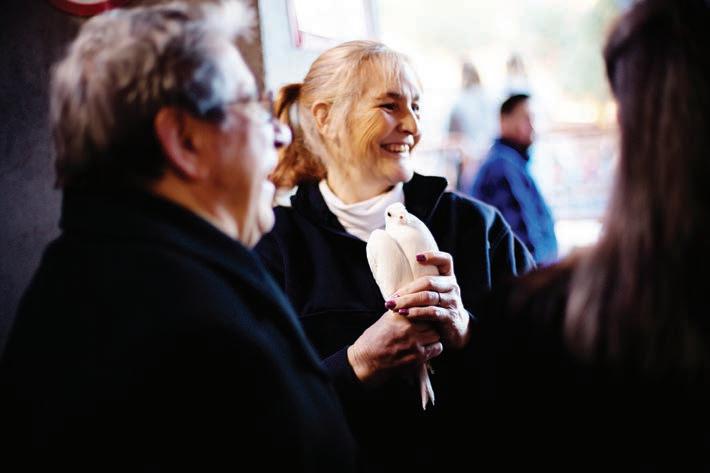
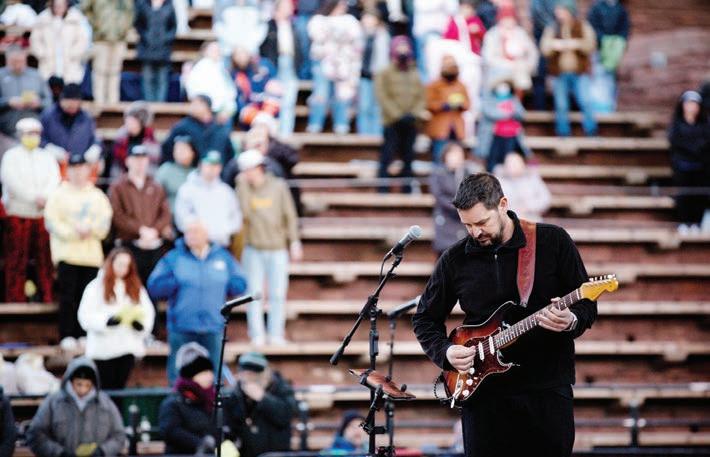
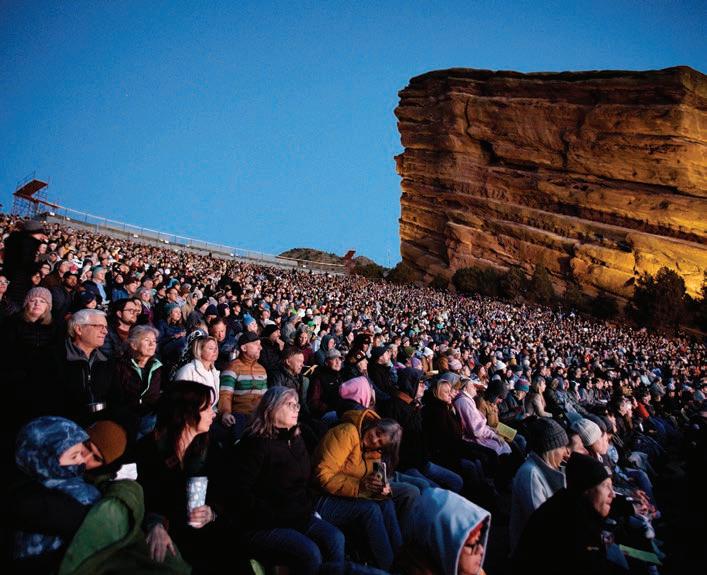
Blood Brothers sang an original song, “Nothing but the Blood,” which Swearengin told the crowd talked about the tension between the trouble in people’s lives and the celebration of Easter.
“We need to embrace (both) the hurt and the hope from our faith in Christ’s resurrection,” he said.
Warm Hearts Warm Babies serves hospitals, agencies across Colorado
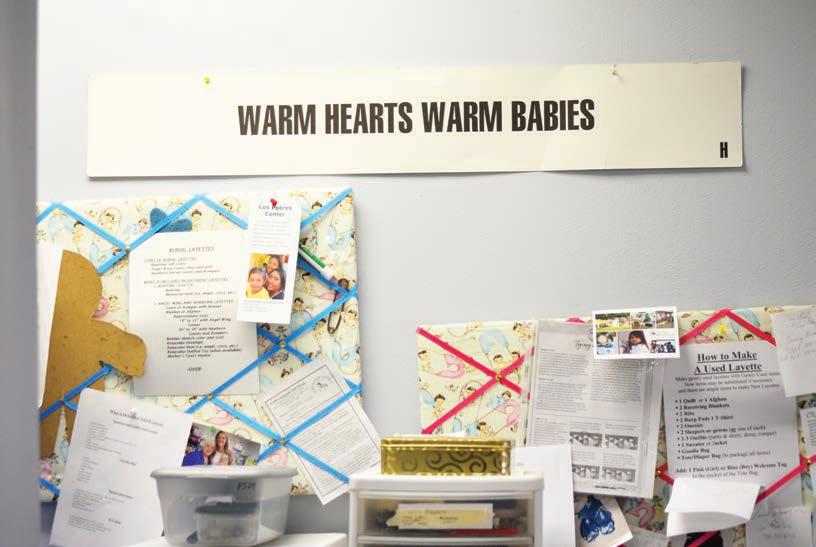
BY TAYLER SHAW TSHAW@COLORADOCOMMUNITYMEDIA.COM

Surrounded by colorful fabric patterns, handmade baby items and frequent laughter, volunteers of the Warm Hearts Warm Babies nonpro t went to work on a Friday morning to put together layettes for organizations who need them.
e nonpro t has a list of roughly 40 agencies it delivers items to throughout Colorado, said Kathleen Williams, the nonpro t’s grant coordinator. e list includes the Children’s Hospital Neonatal Intensive Care Unit, Platte Valley Medical Center and Denver Medical Center.
“Warm Hearts is totally made up of volunteers,” said Sandi Powis, president of the board of directors. “Everyone’s volunteering with their heart and skills to make things for newborn (babies), preemies to help them get a good start in this world.”
Volunteers sew, knit, crochet and quilt items such as bibs, burp pads, jackets, hats and blankets. e items are assembled into a layette, which is a collection of clothing and accessories for newborn infants.
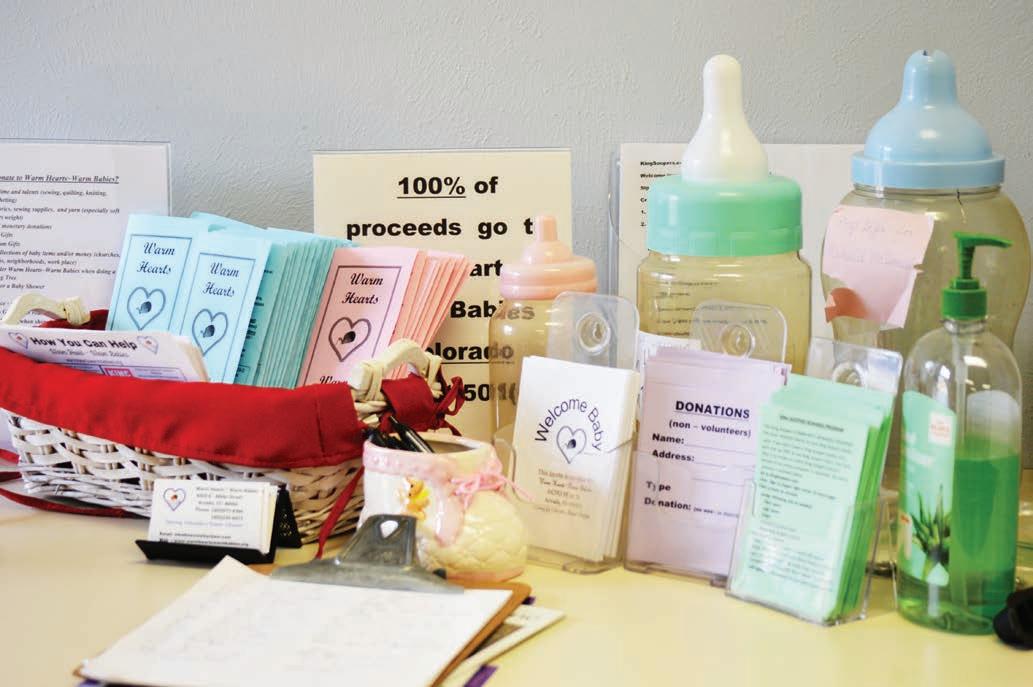
Each layette contains a quilt, two receiving blankets, bibs, burp pads, clothing and a goodie bag containing items such as a bottle, some diapers and a small toy. ese items are delivered in a handmade tote bag.
“All these items are made with love,” Powis said. “We don’t connect to the individuals personally. We deliver the layettes to hospitals, birthing centers, food banks — anyone that can help us help the newborn.” e nonpro t also o ers items for the neonatal intensive care units at hospitals in Colorado, such as positioning roles that are used to help support the infants.
A number of the mothers who receive these items are experiencing homelessness, sometimes living in shelters or in their cars, Williams said.
“We also provide clothing for babies that don’t survive, from tiny little babies to full-term babies,” Williams said. “We have clothing for them that we hand out at the hospitals.”
Included in those burial layettes is a cloth-made envelope intended for the parents to hold important items and memories, Powis said.
“It’s sad, but it’s so important,” Powis said. “And to know that a mom wouldn’t have to go out, or send her mom or her sister to go out and nd things for her precious one that has passed — that it can be given to them and that’s not a worry for them.”
How it began e nonpro t’s origin dates back to 1996, when a woman named Victoria Swain gave birth to a stillborn infant, according to the nonpro t’s website. e hospital she was at could not provide a blanket or clothes for her infant, prompt- ing Swain to look into how she could help donate these types of items.


After recruiting some volunteers and spending a few years working through a di erent organization called Newborns in Need, in 2000, Swain and the other board members decided to create their own nonpro t: Warm Hearts Warm Babies.
Powis estimated the nonpro t currently has about 200 volunteers and 12 work groups throughout the state including in Arvada, Brighton, Littleton and ornton.
Powis is part of the work group in Conifer, where she lives. She joined the organization roughly six years ago.
“I’ve been doing things for babies for many years, donating to other groups, but they were all missing something. ere was no social connection with anyone else making things,” Powis said. “I found that they had a local organization up here in Conifer and it was like, that’s it — that’s one I can link up with. I can meet people right here in our community.”
Williams learned about the nonpro t through a quilt show, as representatives of the organization had a table at the event. Living in Aurora at the time, she initially joined the Aurora group. Since then, she has moved to Colorado Springs
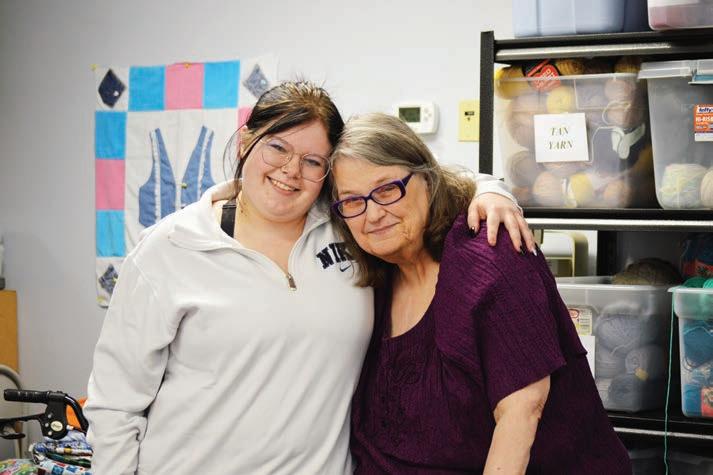
SEE IN NEED, P13









